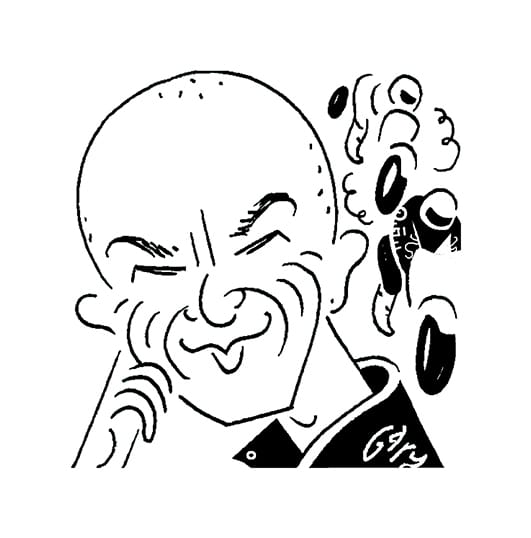Mat Oxley: Wondrous talent that could carry Quartararo to the MotoGP title
“Quartararo was hailed as the next Márquez, even before he got to MotoGP”
 The French have enjoyed very little success in the premier class of motorcycle racing, which is rather strange, especially because France was the first great motorcycling nation.
The French have enjoyed very little success in the premier class of motorcycle racing, which is rather strange, especially because France was the first great motorcycling nation.
French riders and machines dominated the early years of bike racing. Indeed the first great racing motorcycle was a French tricycle, built by De Dion-Bouton in western Paris. Three wheels made a lot more sense than two at a time when roads were rutted, muddy and covered in horse manure. Not a single two- wheeler qualified for the Paris-Marseilles-Paris race of September 1896, but a De Dion-Bouton finished third, chasing two Panhard cars.
Seven years later a fearsome 1500cc Clément motorcycle, manufactured just over the River Seine from the De Dion-Bouton workshop, won the first ‘motorcycling track championship of the world’ at the Parc de Prince cycle track in Paris. The year after, Paris-based Griffon won the inaugural Coupe Internationale motorcycle races around a 33-mile street circuit south west of Paris.
Despite this promising start French riders won just three MotoGP races during the first seven decades of world championship racing: Pierre Monneret in 1954, Christian Sarron in 1985 and Régis Laconi in 1999.
At Jerez in July, Fabio Quartararo became the fourth Frenchman to win a premier-class race, with a smoothly delivered performance in treacherously hot and slippery conditions. The following Sunday at Jerez – MotoGP, like F1, is also using double-headers – he repeated the performance. Few were surprised at the 21-year-old’s success, because five times during his 2019 rookie campaign he came within a second of beating reigning king Marc Márquez.
Quartararo is a perfect example of how the career of a bike racer is a perilous journey, during which poor luck and pitfalls can overpower talent. At the age of 14, and at his first attempt, Quartararo became the youngest winner of the Campeonato de España de Velocidad, the Spanish championship which is now the stepping-stone to grands prix. But he was too young to move into world championship racing, so he stayed in CEV for 2014. He won the title again, creating a flurry of interest from GP teams. However, the 2015 GP season started before his 16th birthday, so he was still unable to step up. MotoGP had a simple solution to the problem – its Grand Prix Commission sat and changed the rules.
Quartararo was hailed as the next Marc Márquez even before he arrived in MotoGP. Many experts expected him to win the Moto3 world title at his first attempt. But he didn’t.
For all kinds of reasons – bike problems, team issues, injuries and perhaps a distracted teenager’s mind – his two seasons in Moto3 were mostly a disaster. In 2017 his manager moved him into the bigger Moto2 class, where again he struggled, until he took his first GP win at Barcelona in June 2018, very much against the run of play. Within weeks he had signed his first MotoGP contract, with the Petronas- and Sepang-backed Yamaha team, alongside Valentino Rossi’s protégé Franco Morbidelli. Quite a turnaround.
“Quartararo has huge talent: cool under fire, fiercely intelligent”
Quartararo – the son of a French racing champion – has a wondrous talent. Obviously he is super-fast, but he has two other attributes that can make the difference at MotoGP level, where everyone has an extraordinary ability to get the best out of an engine and two wheels.
He is very cool under fire and he is fiercely intelligent. His mind is lightning quick, like Rossi’s and Márquez’s, the most successful riders of the last two decades. You find him behind the pits after a practice session, surrounded by a scrum of journalists, all of them firing questions, in English, French, Spanish and Italian. He answers each question in the interlocuter’s own tongue, hardly pausing for breath, laughing all the time.
On track he is pinpoint accurate and unerringly consistent, although he can adapt his riding technique, race by race and even corner by corner, according to the grip available. In MotoGP’s current era of spec software and Michelin tyres this skill is vital, because riders often find their machines outside their sweet spot, so they must improvise to extract maximum performance. Yamaha has had a horrible time since these rules were introduced in 2016. During the first four seasons of this new technical combination the factory’s YZR-M1 won 13 races, compared to 30 during the previous four years. Quartararo – who will replace the ageing Rossi in the factory Yamaha team next season – can ride however his motorcycle needs to be ridden.
When the bike and the tyres allow him to exploit his M1’s excellent corner-speed potential he uses smooth, swooping lines. But if there’s not enough grip to dance on the edge of the tyres he changes his technique to square off corners: late on the brakes, turn the bike aggressively, then on the throttle as quick as he can.
This latter technique works better in a battle, especially when fighting six-times MotoGP king Márquez, whose Honda RC213V usually requires the Spaniard to square off the corners. Quartararo has a great chance to win the COVID-19-truncated MotoGP championship, poor luck and pitfalls allowing. Márquez gave him a head start by crashing out of the first race, breaking an arm. If he does inherit the crown, he will be the first champion from outside a factory team since the 1980s.
